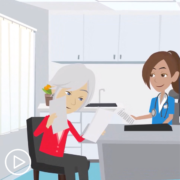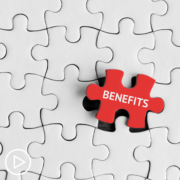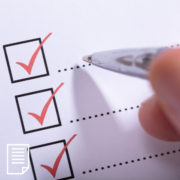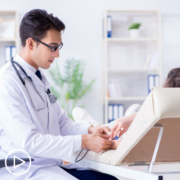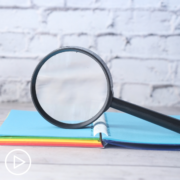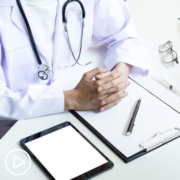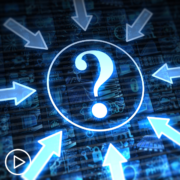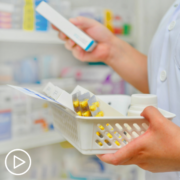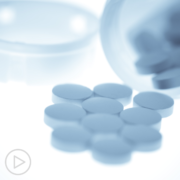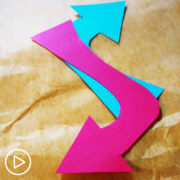What Are Common Symptoms of DLBCL? from Patient Empowerment Network on Vimeo.
What symptoms could diffuse large B-cell lymphoma (DLBCL)patients experience? Dr. Kami Maddocks defines DLBCL and explains the diagnosis, symptoms, sub-types and progression of the disease.
Dr. Kami Maddocks is a hematologist who specializes in treating patients with B-cell malignancies at the The Ohio State University Comprehensive Cancer Center – The James. Learn more about Dr. Maddocks.
See More From The Pro-Active DLBCL Patient Toolkit
Related Programs:
Transcript:
Katherine:
Now, let’s learn more about DLBCL. For those who may be newly diagnosed, what is it?
Dr. Maddocks:
Diffuse large B-cell lymphoma is a type of non-Hodgkin’s lymphoma. So, this is considered a blood cancer. Lymphomas are a cancer of the lymphocyte, which is one of the types of blood cells that form your immune system. So, when you think about your nodes, these are part of the cells that help fight different types of infection. So, diffuse large B-cell lymphoma is one of the types of non-Hodgkin’s lymphomas, it’s aggressive, and it is considered an aggressive form of lymphoma. And it’s when you get a cancer of those lymph cells that often involved the lymph nodes but could also involve bone marrow, blood cells, other sites outside of the lymph nodes.
Katherine:
Do we know what causes DLBCL?
Dr. Maddocks:
For the most part, we don’t know what causes diffuse large B-cell lymphoma. So, most of the time, it’s going to arise with patients not having risk factors. We know that age is the most common risk factor with the median diagnosis of a patient in their 60s.
Although, we also know that diffuse large B-cell lymphoma, why it’s more common to be diagnosed later in life, can occur across all the age spectrum. So, you see this in pediatric adolescents, young adults, and older adults. There are some causes. These represent more than minority of cases but certain viruses, including HIV virus, can be associated with the development of lymphoma. Certain other medical conditions, like rheumatologic conditions and some of the treatments for these, can be associated, and then, some chemical exposures. But in general, most of the time, we’re not going to have an identified cause.
Katherine:
What are the symptoms?
Dr. Maddocks:
They can look a little bit different for different patients. So, because this is often a cancer, most of the time there will be lymph node involvement. For some patients, they can actually feel or somebody will see a lymph node that grows. Most of the time, when this occurs, it’s going to be in the neck, under the armpits, or in the groin area.
Patients can start to have symptoms from other sites, of those lymph nodes growing or disease so that they can get pain or shortness of breath. Or they can have what’s called B symptoms. So, B symptoms are inflammatory like symptoms from the lymphoma, and these include weight loss. So, a rapid change in weight for no reason. Night sweats. So, daily night sweats, we call them drenching night sweats. They wake up the patient, they soak their clothes, sometimes they soak the whole bed. And then, fatigue. So, extreme fatigue, not able to do your daily activities. And then, occasional people will have cyclical fevers.
Katherine:
Are there different types of DLBCL?
Dr. Maddocks:
So, in general, diffuse large B-cell lymphoma, there’s one major subtype. You can divide it into different pathological or molecular subtypes.
So, where the cell develops lymphoma during the cell’s development, there are different chromosome abnormalities. So, there are different categorizations but in general, diffuse large B-cell lymphoma itself is considered – it’s treated, often, the same even with these different subtypes. So, there are different subtypes but in general, they’re all considered a form of diffuse large B-cell lymphoma.
Katherine:
They’re under this umbrella of DLBCL.
Dr. Maddocks:
Yeah. Yeah.
Katherine:
Yeah.
Do patients usually get diagnosed after they experience some symptoms?
Dr. Maddocks:
So, because this is an aggressive lymphoma, there are a lot of patients that will have symptoms with this, and that’s how they’ll present via either noticing the lymph nodes, having the B symptoms, or having pain, or other abnormalities from the lymphoma progressing.
Occasionally, whereas indolent lymphoma is more commonly found of incidentally. Occasionally, that’ll be the case with these, but I would say a fair number of patients have some sort of symptom or something that brings them to medical attention.
Katherine:
How does DLBCL progress?
Dr. Maddocks:
So, they’re different, as far as there’s more aggressive and less aggressive. So, some patients can develop symptoms, really, over days to weeks. Whereas, some patients are more weeks to months.








